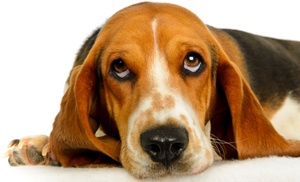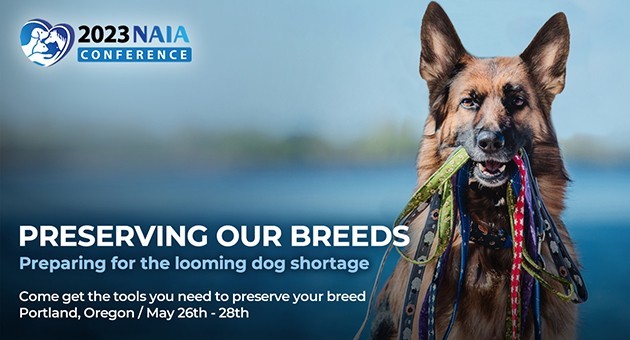Last year, the Kennel Club announced it was ushering in big changes for 2012, the most noted being new judging criteria, where a veterinarian can overrule a dog show judge, taking away the breed win and eliminating that dog from representing his or her breed in the group ring. As a veterinarian who works with dedicated purebred breeders, I cautioned against such an approach, and consider the recent decisions at Crufts both disappointing and harmful.
The Kennel Club says that the objective for this new policy “… is to improve canine health and protect the sport of dog showing,” and no one disagrees that it should be promoting good health in dogs. But whether implemented in an honest attempt to improve breed health, or as a misguided public relations ploy, these policy changes have failed on both levels. As predicted, they have done little to placate the critics of purebred dogs and conformation shows; the only major success has been in alienating its own exhibitors and breeders.
Carts Before Horses
For exhibitors who think veterinary screenings at dog shows are appropriate, much of the outrage over the veterinary inspections could have been avoided if the veterinarians simply performed their inspections prior to the breed judging. The public display of yanking away a breed win with no specific statement of the alleged defect not only fosters uncertainty, it is embarrassing and frustrating to the owner, judge, breeders, and the sport.
Of course, such an approach would have required many more dogs to undergo veterinary inspection. But if the true goal is to “improve canine health,” why not inspect them all? This could have been an educational opportunity for owners to learn what constitutes a disqualifying fault – at least under that particular veterinarian on that particular day – and an opportunity to screen the health of all dogs within the breed. As is, the policy is inflammatory, and sets everyone up for failure. Instead of “protecting the sport of dog showing,” it gave the sport and those involved a black eye.
On top of putting the cart before the horse, the inaccessibility of comments explaining why individual dogs were disqualified further fanned the flames of rumor and outrage. In many livestock and dog judging events, judges are required to provide verbal or written comments to support their decision. Why not at Crufts? If the policy allowed for objective and fair criteria, there would have been no reason not to share the reasons for disqualification with the world. Again, an opportunity for education lost.
Arbitrary Guidelines
The clinical signs selected by the Kennel Club were described as those that required only a “veterinary visual observation and opinion at the time and for the purpose of establishing whether the dog is fit for function in continuing on to the group competition on the day.” The general guidelines list four areas the veterinarians should look for clinical signs:
- externally visible eye disease
- lameness
- dermatological disorders
- respiratory distress
These guidelines sound fine on the surface. But problems are easily noted on closer inspection. First, the guidelines don’t have uniform application. The Chow Chow, Clumber Spaniel, Mastiff, Neapolitan Mastiff, Shar-Pei and Saint Bernard are not allowed to have had “clear evidence of eyelid surgery;” is that an implication that other breeds are allowed to have had eyelid surgery and still be allowed to show without disqualification? And why is the Chow Chow’s “clear evidence of eyelid surgery including tacking a “MAJOR” disqualifying conformational defect, while it is not major in other breeds? Is it possible to determine on visual inspection that the scar or ulcer on the cornea is caused by face folds, distichiasis, ectopic cilia or poor eyelid anatomy and not from trauma in the garden, or that visible hair loss or scar is from dermatitis and not from some other cause such as trauma unrelated to dermatitis?

The Basset Hound, one of the 15 "high profile" breeds required to undergo veterinary exams at Crufts |
And what to make of “free of signs of discomfort or suffering associated with exaggerated conformation”? These are very subjective criteria, with no easy way to measure what “discomfort” or “suffering” means. If these are the specific conditions the Kennel Club is choosing to eliminate, wouldn’t it make more sense to have the dogs pre-screened by a veterinary expert with appropriate equipment and objective guidelines prior to the day of the show? Requiring exhibitors to file appropriate supporting health screening paperwork prior to exhibiting would go a lot farther toward enhancing health in the selected breeds of dogs.
It is clear that the Kennel Club chose disorders that were “hot button” issues and not health concerns that had true science behind the screening tests or health priorities. The guidelines targeted characteristics that set these high profile breeds apart from others… for now. They targeted the extreme appearances that make these breeds what they are – unique in their appearance.
Who Watches the Watchers?
The published policy does not indicate how the veterinarians are selected and what their qualifications are.
If I were a competitor, I would want to know who the veterinarians selected are and how they were determined to be qualified to ensure the dogs allowed to go forward were “free of signs of discomfort or suffering associated with exaggerated conformation.” Having a veterinary degree does not mean the veterinarian is qualified to make these far-reaching decisions. The published provisions for training veterinarians to provide this service to the fancy seem to have the potential to be loosely applied.
As a competitor, I know who my conformation judge is. Shouldn’t we also know who has been deemed qualified to overrule conformation judges, the judges who have had to meet guidelines that determine they have the experience and knowledge to make breed win decisions?
The application and institution of this policy at Crufts has been a wake up call to dog fanciers in other countries, as shown by the emergence of groups like The Canine Alliance and Exhibitor's Choice & Voice. Rather than complacently watch the harsh application of this process of having our breed standards hijacked by the pressure of public opinion, this should be our opportunity as breeders, exhibitors and buyers to take back our dogs. If this is the best idea The Kennel Club can come up with to “improve canine health and protect the sport of dog showing,” then we are all in serious trouble, and it is now up to us, as dedicated breed enthusiasts, to step up and save our sport before it is too late.
 |
Like this article? Don’t forget to share, like or follow us |
 |
NAIA WEEKLY ROUNDUP
FEATURED & LATEST ARTICLES
GET THE NAIA WEEKLY ROUNDUP VIA EMAIL FOR FREE
Stay Connected with The NAIA: Sign Up for The Weekly Roundup
Join our FREE newsletter and community of animal advocates and receive The NAIA Weekly Roundup straight to your inbox. Stay in the loop with the latest news, events, and ways you can make a difference in the lives of animals. Sign up now to stay informed to create positive change!
Sign Up



 Shelter Spay Pushback, A Contentious Ostrich Cull, and More!
Shelter Spay Pushback, A Contentious Ostrich Cull, and More!
 Bad Dog Stories, Goodbye Cephalopod, and More!
Bad Dog Stories, Goodbye Cephalopod, and More!
 A Conference Call for You, A Fallen Elephant, and More!
A Conference Call for You, A Fallen Elephant, and More!
 Exotic Pets, Animal Evacuation Protocols, and More!
Exotic Pets, Animal Evacuation Protocols, and More!

